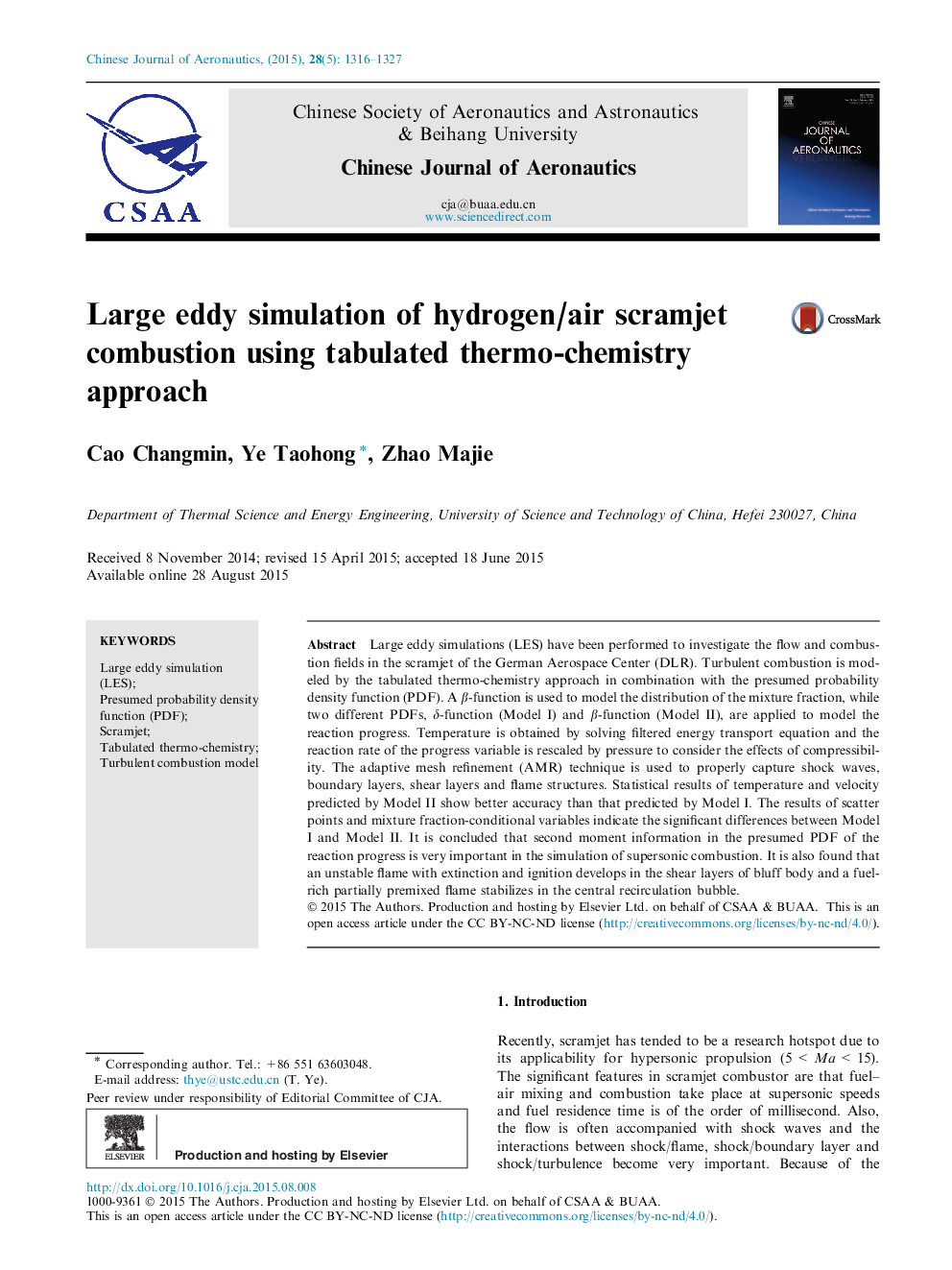| Article ID | Journal | Published Year | Pages | File Type |
|---|---|---|---|---|
| 757188 | Chinese Journal of Aeronautics | 2015 | 12 Pages |
Large eddy simulations (LES) have been performed to investigate the flow and combustion fields in the scramjet of the German Aerospace Center (DLR). Turbulent combustion is modeled by the tabulated thermo-chemistry approach in combination with the presumed probability density function (PDF). A ββ-function is used to model the distribution of the mixture fraction, while two different PDFs, δδ-function (Model I) and ββ-function (Model II), are applied to model the reaction progress. Temperature is obtained by solving filtered energy transport equation and the reaction rate of the progress variable is rescaled by pressure to consider the effects of compressibility. The adaptive mesh refinement (AMR) technique is used to properly capture shock waves, boundary layers, shear layers and flame structures. Statistical results of temperature and velocity predicted by Model II show better accuracy than that predicted by Model I. The results of scatter points and mixture fraction-conditional variables indicate the significant differences between Model I and Model II. It is concluded that second moment information in the presumed PDF of the reaction progress is very important in the simulation of supersonic combustion. It is also found that an unstable flame with extinction and ignition develops in the shear layers of bluff body and a fuel-rich partially premixed flame stabilizes in the central recirculation bubble.
